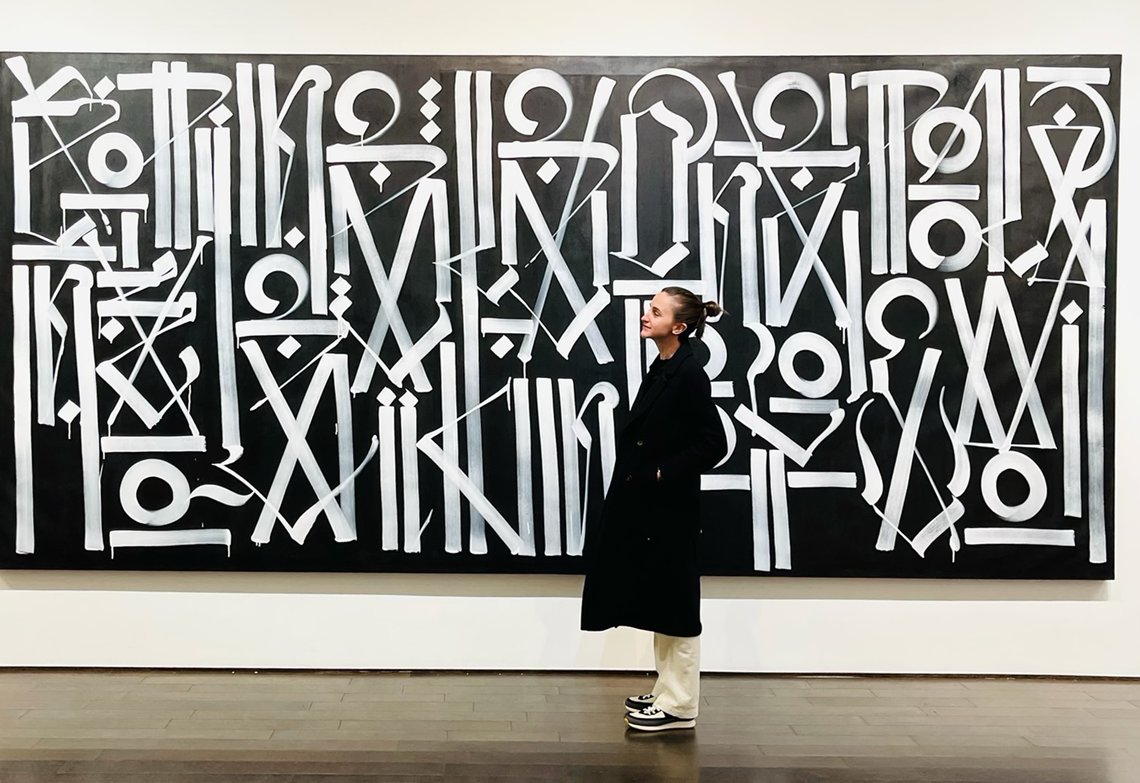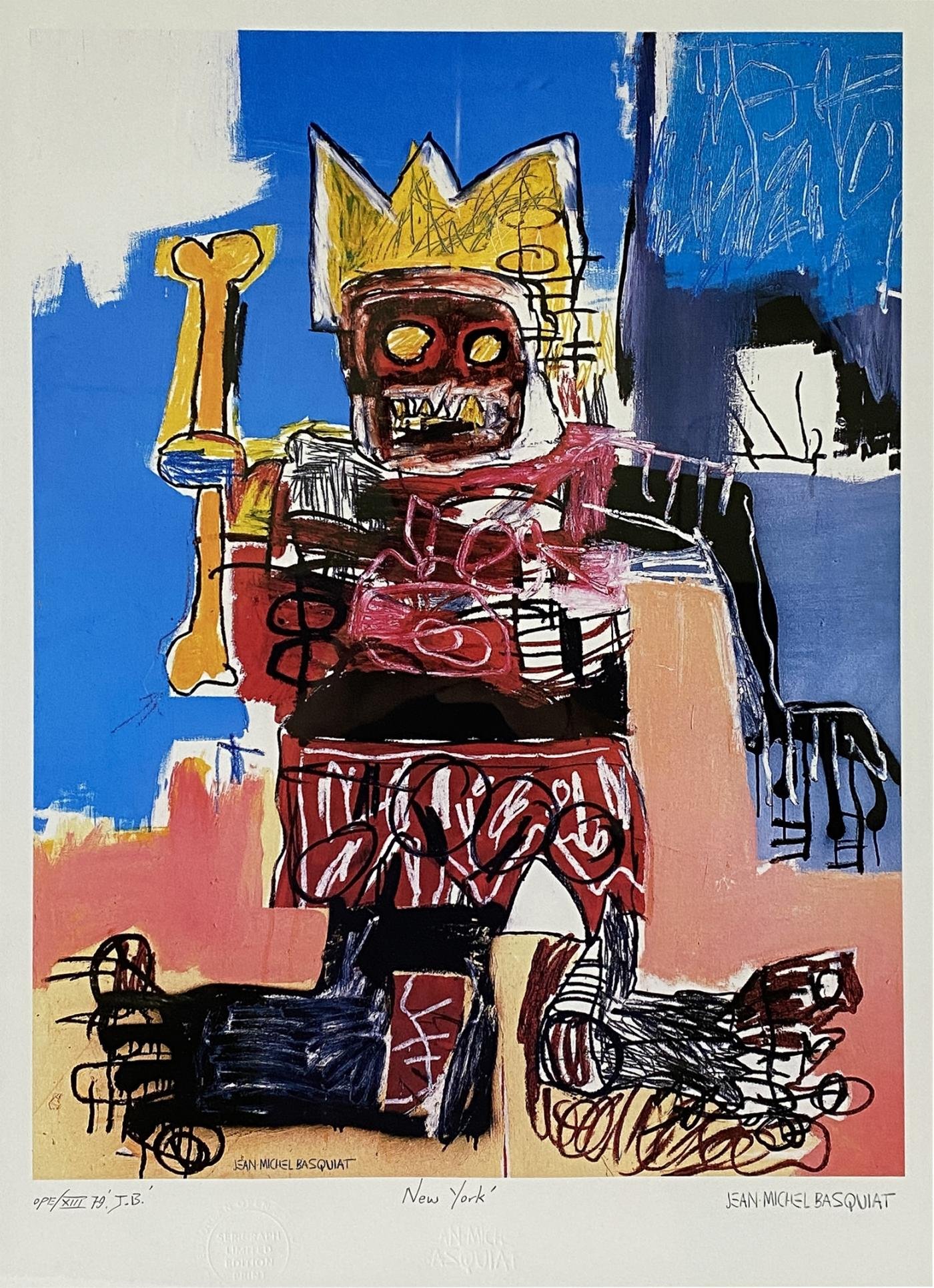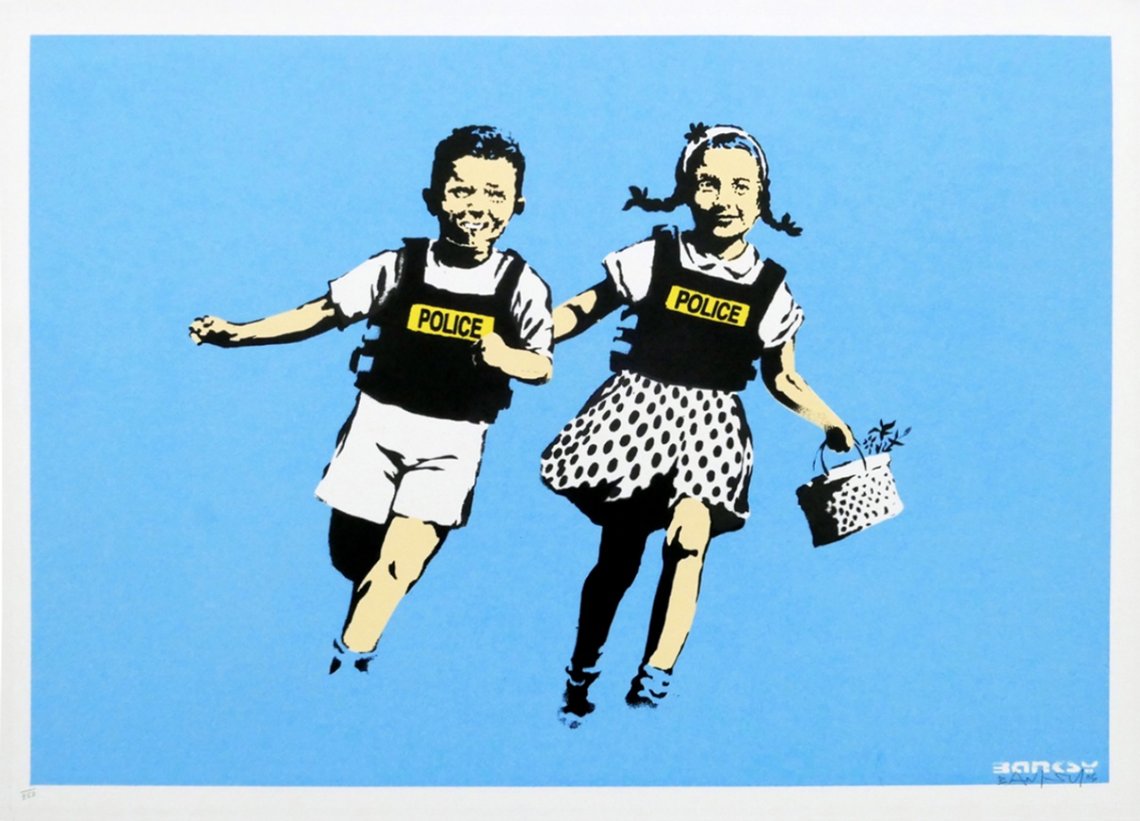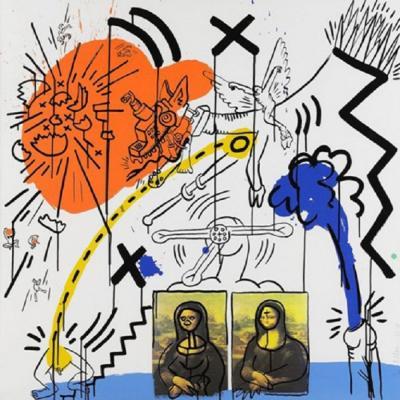Chase Contemporary Partner Isabel Sullivan on the Resurgence of Street Art
 |
by Benjamin Genocchio
In the art world, 2021 was the year of the NFT, but it was also the year of another graphic form of art — street art and graffiti art, especially for Jean-Michel Basquiat whose artwork sold at auction topped a whopping $450 million in a single year.
Basquiat’s origins as a street artist had a knock-on effect, raising prices and interest in a wide range of street and graffiti artists including Richard Hambleton, Blek Le Rat, RETNA, Risk, Keith Haring, Kenny Scharf, Ron English and of course Banksy.
Chase Contemporary Gallery in Soho, New York, and also in East Hampton, out on Long Island, specializes in street art. Incollect sat down with gallery partner Isabel Sullivan to find out what artists to watch and how street art is being integrated into interior design concepts for homes and corporate offices.
 |
| Isabel Sullivan in her Soho Gallery in front of a monumental work by the street artist RETNA. Image courtesy of Chase Contemporary Gallery. |
 | |
Jean-Michel Basquiat (1960-1988), Untitiled-IV, 1982. Lithograph, 35.5 x 29 in. Signed limited edition. |
Benjamin Genocchio: What is the difference between street art and graffiti art?
Isabel Sullivan: The writer and photographer Martha Cooper nicely explained the difference between graffiti and street art as follows: graffiti art has to do specifically with lettering while street art relies on images. The heart of a graffiti art piece is the stylized name of the graffiti writer, their tag. Street art by contrast contains painted images — it is image-making within the urban landscape, often using public spaces and walls as a canvas but additionally can be transferred onto traditional supports like a canvas or paper in printmaking. There's an overlap too — some artists do both.
Benjamin Genocchio: Why in your view is street art suddenly popular with interior designers?
Isabel Sullivan: Many street artist have become international brands, even household names and there is a ‘young’ and ‘cool factor’ to their work and today collectors and designers want to tap into that for a fresh urban interior scheme.
Two superstars of the market are Banksy and Basquiat, both of whom are street art rebels, trailblazers in their own way and therefore highly coveted by museums and serious art collectors and that has pushed up prices to a point where sales become news. I think street artists have an ability to connect to a broader audience as well; they communicate directly with the public through the creation of unsanctioned public work and the intensity and immediacy of the imagery they choose to depict. There is also something sexy, gritty, even timeless about street artwork.
 |
| Banksy (b. 1974), Jack and Jill (Police Kids), 2005. Signed, limited edition screenprint. Offered by Splendid Antiques. |
Benjamin Genocchio: Which young street artists are you excited about?
Isabel Sullivan: I'm really excited about Logan Sylve. Although not a street artist, as he isn’t painting on walls, he falls under the umbrella of underground, counterculture aesthetics that much of street art is born out of. I love the rawness and the directness of his work. Logan isn't afraid of depicting the grotesque or the uncomfortable. His graphic illustrations are humorous, playful, reminding me of the ‘lowbrow’ art movement that originated in Los Angeles in the 1960s. There is a sense of humor, sometimes sarcastic commentary on contemporary life.
, Shadow Jumper with Pom Poms, 1997. Acrylic on canvas, 99 x 67 inches.jpg) | |
| Richard Hambleton (1952-2017), Shadow Jumper with Pom Poms, 1997. Acrylic on canvas, 99 x 67 in. Image courtesy of Chase Contemporary Gallery. |
Benjamin Genocchio: The gallery specializes in the work of historical street artists like Richard Hambleton, much sought after by collectors. What makes his work so special?
Isabel Sullivan: There is something so unique, edgy about the energy of Hambleton's work. He was an artist with the integrity, depth and intellect of a conceptual artist coupled with the painterly immediacy of abstract expressionism while simultaneously exploring appropriation techniques found in Pop. He seemed to stand in the shadows of America's most consequential art movements, bringing these seemingly disparate ideas together in a confluence completely his own, breaking down representative forms and focusing on brushwork like artists Franz Kline, Lee Krasner, Robert Motherwell.
For me Hambleton's work expresses his emotions so powerfully, one feels the passion, the exploration of the sublime that is found in 19th Century German Romanticism. The supernatural power of his landscapes was a departure from his street art work but it carried the same strength and sentiment. He was really an action painter when it came to street art and his now famous shadowman series.
 (estate authorized print) Jumping Shadow Diptych, 1997: 2021 Archival pigment print on aluminum composite panel 36 x 72 inches. Edition of 75.PNG) |
After Richard Hambleton (1952-2017) (estate authorized print), Jumping Shadow Diptych, 1997/ 2021. Archival pigment print on aluminum composite panel. 36 x 72 inches. Edition of 75. Image courtesy of Chase Contemporary Gallery. |
Benjamin Genocchio: I am seeing works by Hambleton everywhere now, in homes, in offices, and especially magazine spreads. What is the attraction for designers?
Isabel Sullivan: Hambleton's work is extremely elegant, despite its rough intensity, or perhaps even because of it. The monochromatic color schemes — often black and white, or black and silver — fit into interiors and immediately grab and hold your eye. The artist’s classic shadowman figure is widely recognizable, an iconic image and so it conveys who the artist is and that this is a Hambleton. He has style recognition.































